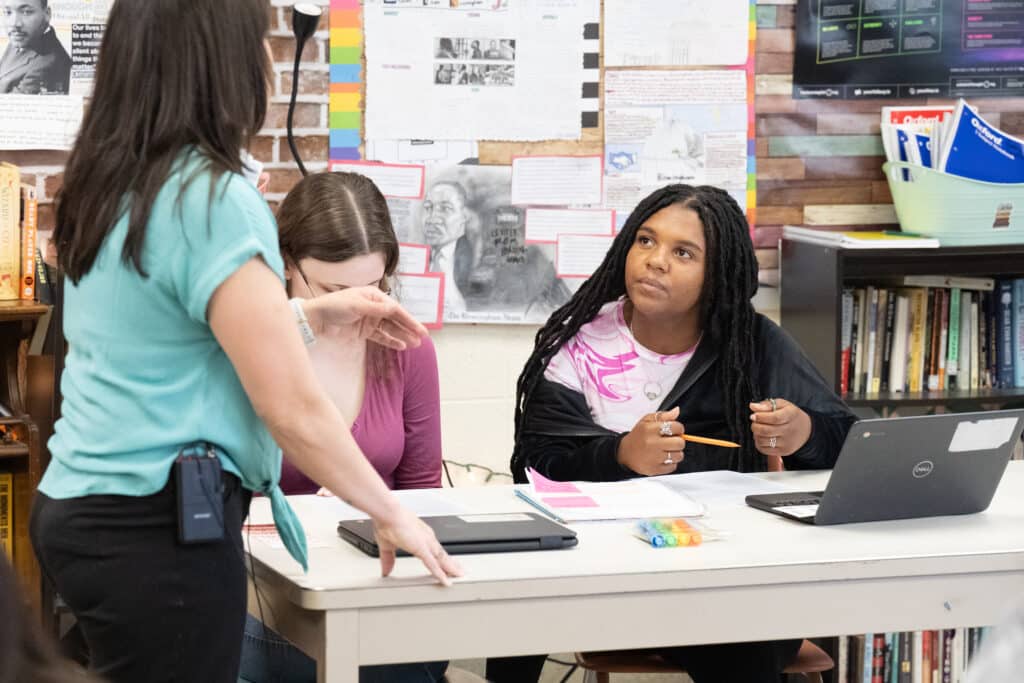
Student practice follows directly after active teaching and gives secondary students the opportunity to apply the skills and concepts they have just learned. During this time, teachers remain actively involved—observing, guiding, and providing feedback—so that any misunderstandings can be addressed before students move on to working independently. Practice in this stage reinforces the idea that mastery comes from consistent effort, and it helps students take small, visible steps toward competence.
Adolescents are developing both higher-order thinking skills and the capacity for self-directed learning. Structured practice:
There are two primary types of student practice: teacher-guided and independent. Teacher-guided practice comes first.
Teacher-guided practice is a nongraded phase in which students try out new learning in a safe, supportive environment. The teacher restates the learning objective, offers structure and focus for the activity, and uses interactive learning structures to keep the work purposeful and engaging. Students may collaborate in small groups, which can make the process enjoyable while meeting their need for social interaction. During this phase, the teacher uses reinforcing language to acknowledge productive strategies, effort, and positive attitudes.
Formative assessment is an essential part of teacher-guided practice. Quick tools such as Fist to Five, short written responses, observations while circulating, or one-word reflections give insight into students’ understanding and confidence. Teachers may also ask diagnostic questions like “What led you to think that?” or “Can you think of another example?” to check reasoning. Based on these assessments, the teacher decides whether to reteach, create supports such as anchor charts, or move students forward.
Once students demonstrate readiness, they are ready to transition to independent practice. Here, they apply their learning on their own, with opportunities for choice to increase investment. Students might respond to a written or audio prompt, create a drawing or model, write from another perspective, or choose between paper-based and digital formats. Independent practice builds confidence, deepens understanding, and prepares students for future application of skills.
You can lean more about independent practice here.
Whether teacher-guided or independent, effective student practice is highly focused, well-structured, and engaging. Activities should encourage effort, challenge students appropriately, foster positive relationships, and make learning enjoyable. With purposeful planning, student practice becomes a vital bridge between instruction and mastery.
Learn more about independent practice, and how it fits into effectively designed lesson, in Building an Academic Community.